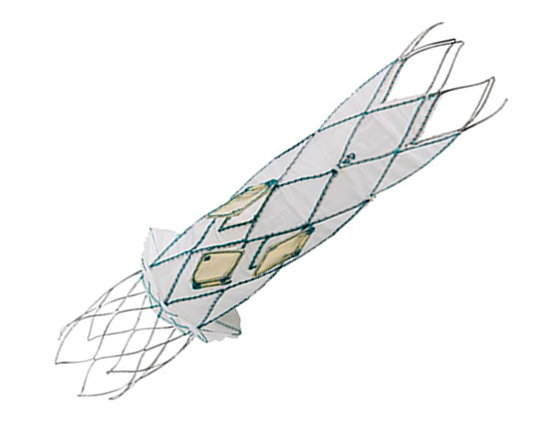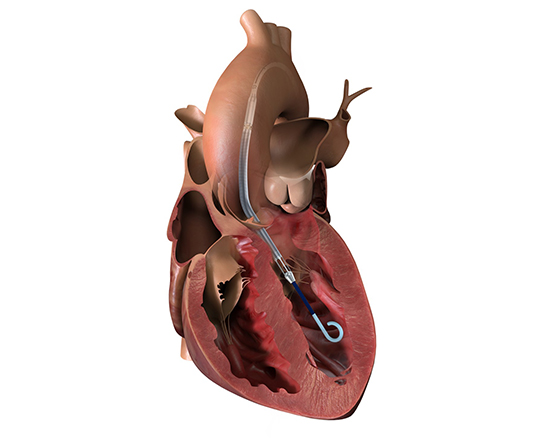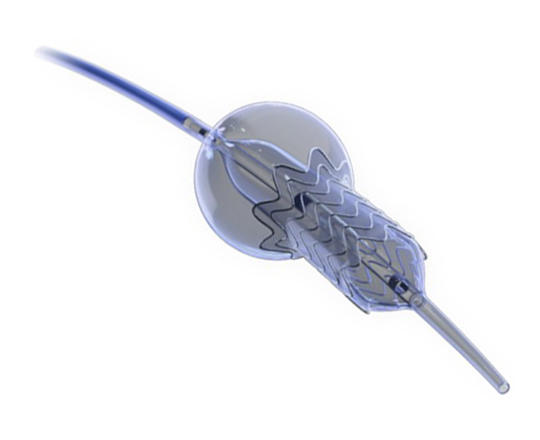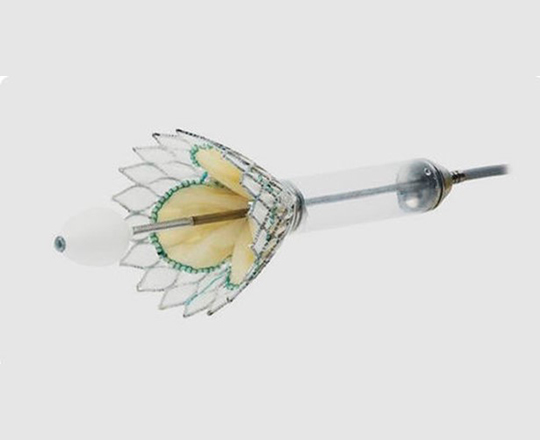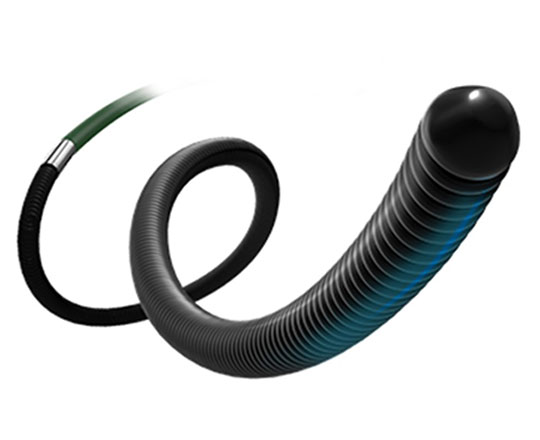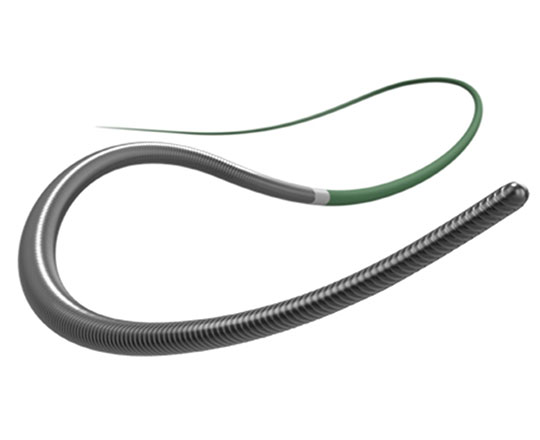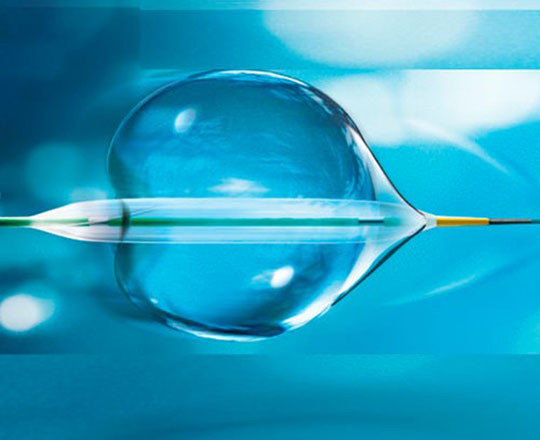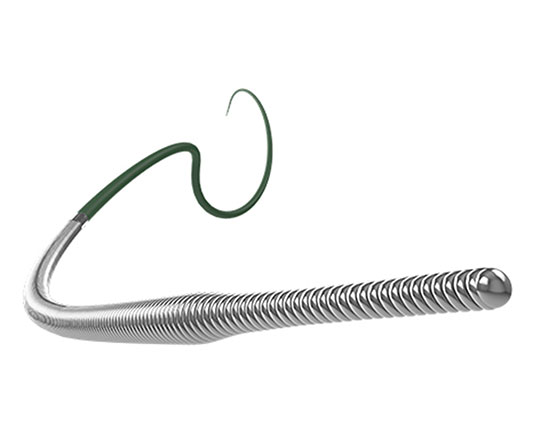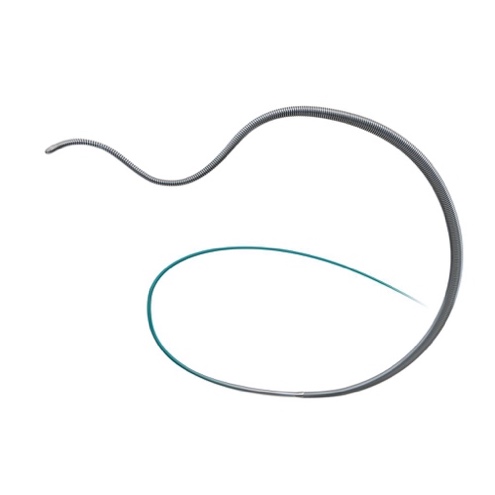
The JUDO guidewires (Boston Scientific) are designed for complex cases of chronic total coronary occlusion and allow maintained direct tactile feedback of the hardness of the plaque. The combination of an effective penetration force, flexibility and precise torque control make them one of the best crossing guidewires particularly for intraluminal crossing of occlusions.
These guidewires are tapered along the last 60 mm, with a core that is surrounded by coiled filaments and goes all the way to the tip. They are hydrophilic-coated to the tip, which measures 0.008”. They possess an innovative technology, called Micro EMT, which means that the core and coil are tapered to match exactly, to enable intraluminal lesion entry. This design avoids exit into the subintimal space; the flexibility of the distal portion along with the precise torque enables effective intraplaque recanalization. These properties reduce whip effect, an important point when aiming for a 3D (3-dimensional) effect, and minimize the possibility of vessel perforation.
Three guidewires of different specifications are available:
- JUDO 1: Soft intraluminal crossing wire for antegrade microchannels, with 1 gf tip load and a penetration force of 31 gf/mm2.
- JUDO 3: Intermediate intraluminal crossing wire for fibrocalcific lesions, 3 gf tip load and a penetration force of 93 gf/mm2.
- JUDO 6: Extra penetration with excellent control in harder lesions, 6 gf tip load and a penetration force of 185 gf/mm2.
Key words: angioplasty guidewire, total chronic occlusion, coronary interventional procedure.



